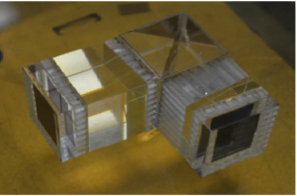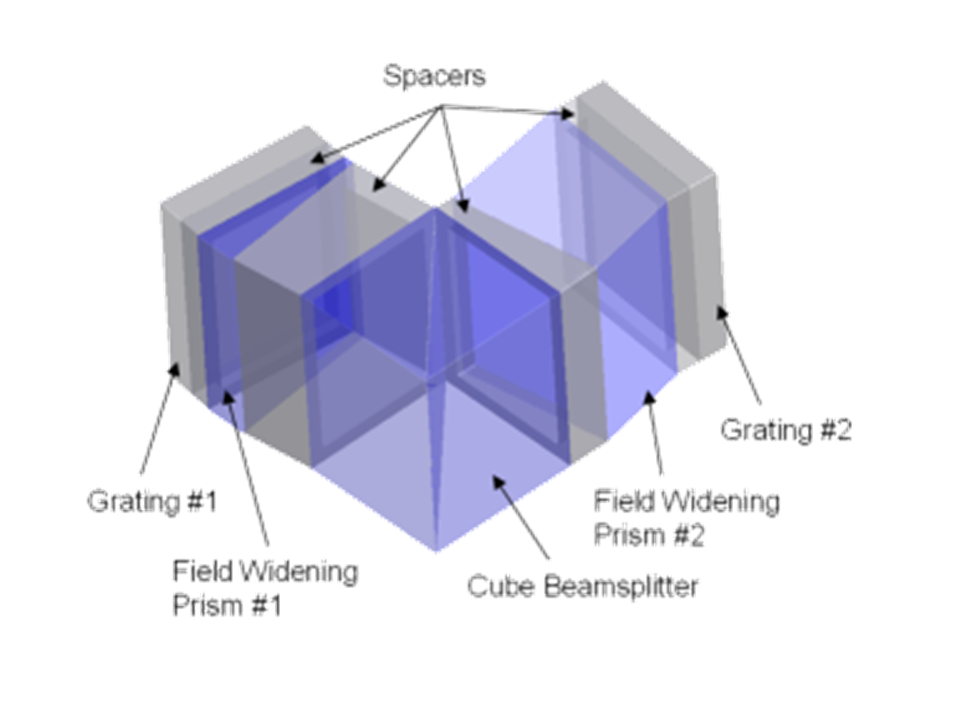For the wind measurement, MIGHTI uses an interferometric technique that is based upon the proven approaches used for the Wind Imaging Interferometer (WINDII) on the NASA UARS satellite [Shepherd et al., 1993] and the Spatial Heterodyne Imager for Mesospheric Radicals (SHIMMER) on STPSat-1 [Englert et al., 2008, 2010a]. Figure 2 shows the monolithic inteferometer employed by SHIMMER. WINDII used the same airglow emission lines to measure Doppler wind in the same altitude range as required for ICON. The added capability based upon SHIMMER space flight heritage allows for a wind measurement virtually identical to WINDII and eliminates moving interferometer parts.

Figure 2: Photograph of the SHIMMER interferometer [Harlander et al., 2003].
The MIGHTI design utilizes a cubic beam splitter (Figure 3 : Right Panel) that allows for a smaller and lighter interferometer and and a more compact optical bench layout, while maintaining excellent optical performance. An engineering model of the interferometer is shown in Figure 3 (Left Panel).


Figure 3 : Left: Engineering model of the MIGHTI interferometer. Right: Design for the MIGHTI
The temperature of the lower thermosphere is derived from measurements of the band shape of the bright oxygen “Atmospheric Band” around 762nm. Most recently, this technique was applied using data from the OSIRIS satellite [Sheese et al., 2010]. Similar measurements were also reported from the RAIDS instrument on the Space Station [Christensen et al., 2012].interferometer.